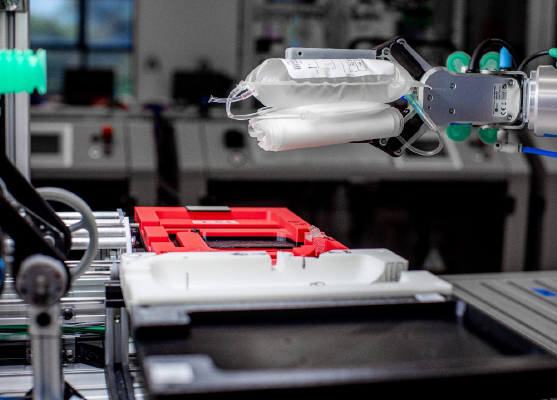Robots can improve the flow of blood donations
Automating the processing of blood donation packs
Swinburne researchers have taken on a believed-impossible project – to automate the processing of blood donation packs – and proved that it’s possible with the help of IMCRC funding.
Blood donation processes are largely manual.
At a processing centre, whole blood donations must be separated into its cellular components via centrifugation. To do this, the blood pack must be folded in a particular way to ensure during the process there is no bacterial contamination (which, in turn, increases shelf life). The process is demonstrated in the following video.
Staff are highly trained to carry out this operation, but there are still risks and instances of human error. Damaged or torn packs not only lead to the loss of a precious donation, but also disrupt production and expose staff to potentially hazardous biological materials. Even subtle non-conformities can occur and build over time, leading to quality deviations. On the other hand, such repetitive motions – sometimes hundreds a day – can cause ergonomic strain and injury for staff.
Deputy Director of Swinburne’s Factory of the Future, Dr Shanti Krishnan led the project to automate the folding and centrifuge loading process using collaborative robots, vision systems, jigs and actuators.
Folding is a highly complex procedure that is challenging to automate using robots. The blood packs are soft and “deformable” objects, which can lead to a significant variation in shape and geometry. This makes it difficult for a robot or computer that is not suited to the myriad of geometries.
In fact, the automation of the manipulation of soft deformable objects is a hot topic in robotics research.
The Swinburne team has been looking for any automation opportunities in the process – breaking it down into smaller steps and building in design and engineering contingencies so that the final design could involve a combination of semi-automated, automated or assisted processes.
Swinburne delivered a proof-of-concept prototype to show automation can be used to fold whole blood collection packs. See video.
The project has been extended to focus now on improving the speed of the robot – which is currently slower than a human.

